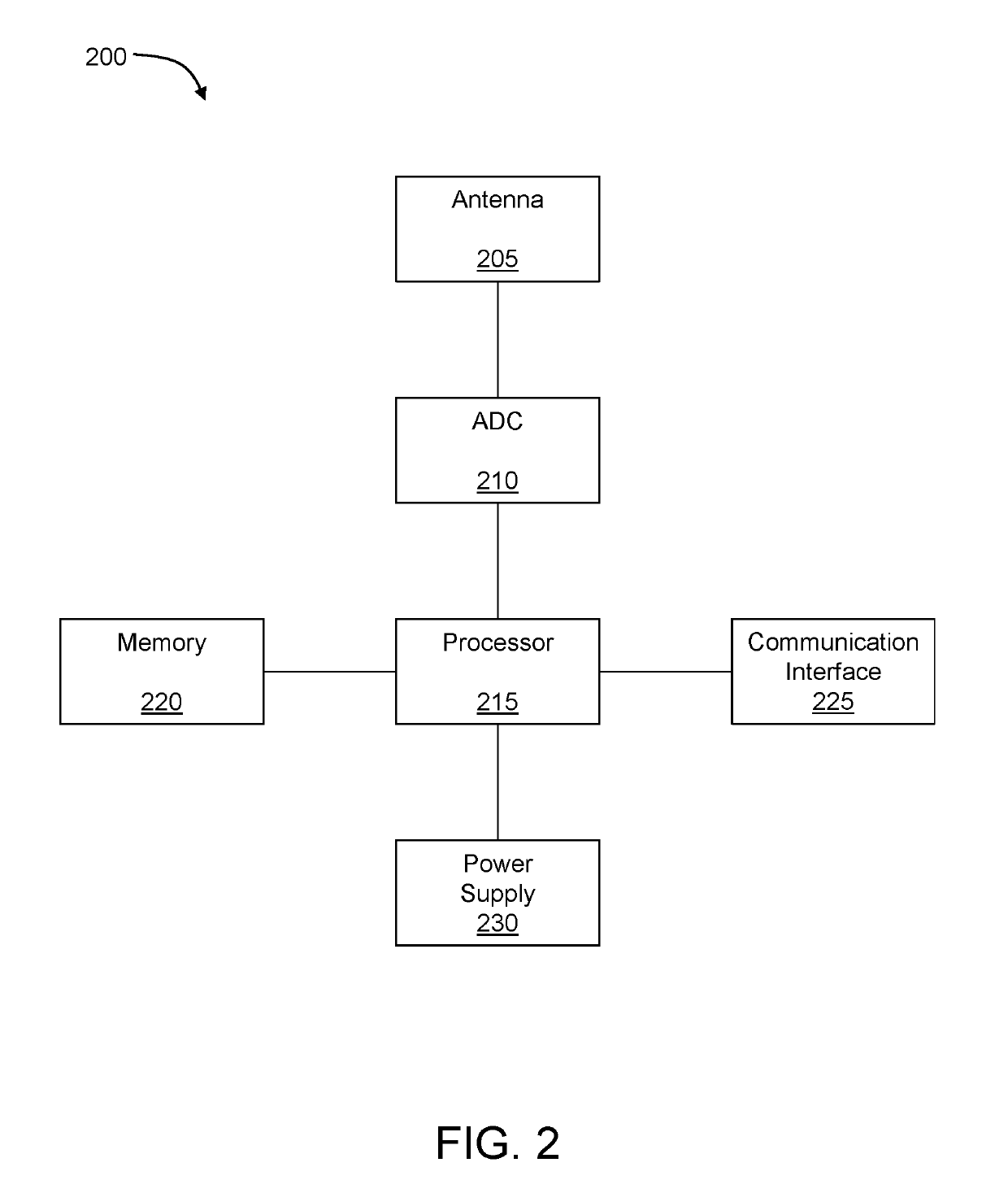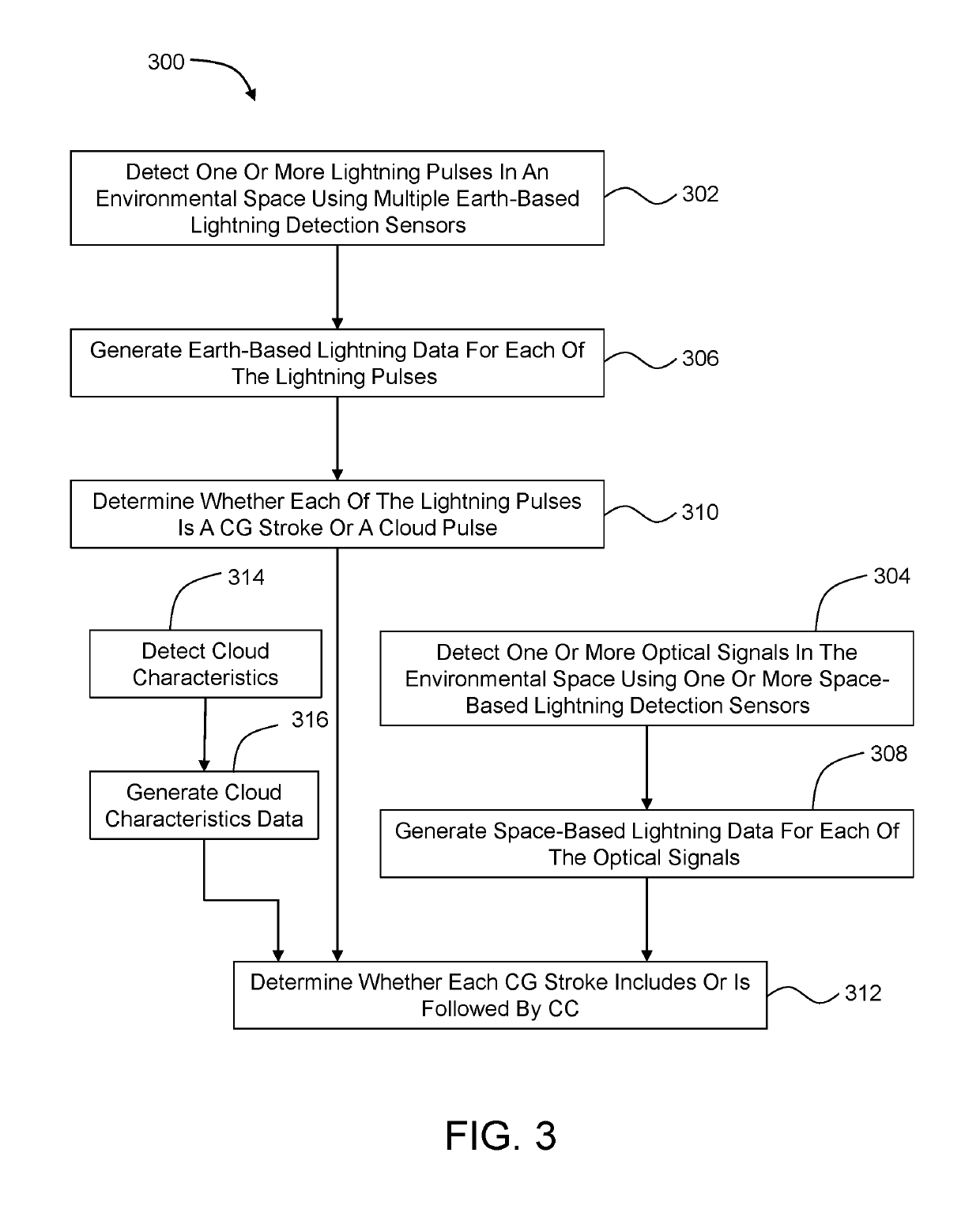Identification of cloud-to-ground lightning strokes with continuing current
a technology of continuing current and cloud-to-ground lightning, which is applied in the field of identification of cloud-to-ground lightning strokes with continuing current, can solve the problems of significant damage, cc included in or following cg, and the problem of ground-based lightning detection system detection of
- Summary
- Abstract
- Description
- Claims
- Application Information
AI Technical Summary
Benefits of technology
Problems solved by technology
Method used
Image
Examples
Embodiment Construction
[0015]Systems and methods are disclosed to detect CG strokes that include or are followed by CC. Such systems and methods may, in effect, combine optical data and / or other data from space-based lightning detection sensors with ground-based lightning detection observations of CG strokes to determine which CG strokes include or are followed by CC.
[0016]CG strokes that are followed by CC produce radio frequency (RF) signals at the lower end of the ELF range. CG strokes that are followed by CC also produce light continuously as long as the CC flows. Recently, the U.S. launched the first geostationary satellite ever to include an optical lightning mapping instrument, known as the Geostationary Lightning Mapper (GLM), followed shortly after by a similar Chinese instrument called the Lightning Mapping Imager (LMI). Over the next several years, the E.U. has plans to put a similar instrument into geostationary orbit. Such space-based lightning detection sensors may provide continuous or near...
PUM
 Login to View More
Login to View More Abstract
Description
Claims
Application Information
 Login to View More
Login to View More - R&D
- Intellectual Property
- Life Sciences
- Materials
- Tech Scout
- Unparalleled Data Quality
- Higher Quality Content
- 60% Fewer Hallucinations
Browse by: Latest US Patents, China's latest patents, Technical Efficacy Thesaurus, Application Domain, Technology Topic, Popular Technical Reports.
© 2025 PatSnap. All rights reserved.Legal|Privacy policy|Modern Slavery Act Transparency Statement|Sitemap|About US| Contact US: help@patsnap.com



